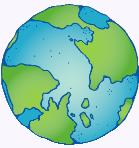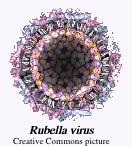 |
||||||||||||||||||||||
Scientific notation…what is it anyway and who uses it? Scientific notation is the way to write really big numbers as well as really small numbers using exponents. It is oftentimes used by scientists and found in scientific measurements, , hence, 'scientific notation.' Using scientific notation is actually quite simple because all you really need to know is how to count! You basically take a number and re-write it as a base number times ten raised to a power! That's it! Okay, there's a little more to it, but trust me, it isn't a whole lot more… Let's take a look at a real-life example, shall we? |
||
 |
||||||||||
The Earth is 150,000,000 km from the sun. This is a LARGE number, so… |
||||||||||
 |
||
 |
||
 |
||||
I dropped all those 0s because they were just placeholders. |
||||
No, we aren't really going to look at how big or small cooties are but if you are interested in REAL nasties like the buggies that can cause Rubella (aka German Measles), then we are talking about a virus in the Togavirus family that is tiny! These teeny-tiny little viruses can make you really sick! The diameter of one of these little buggers is a mere 0.0000055 cm! Okay, so this is a teeny-tiny little number so how do we go about writing it in scientific notation? |
||||||||
 |
||||||||
 |
||
 |
||
 |
||||
I dropped all those 0s because they were just placeholders. |
||||
Rules? Yes, there are ALWAYS rules to follow but these rules make sense so stop complaining.
|
||
©2011–2017 Sherry Skipper Spurgeon. All rights reserved. |
||